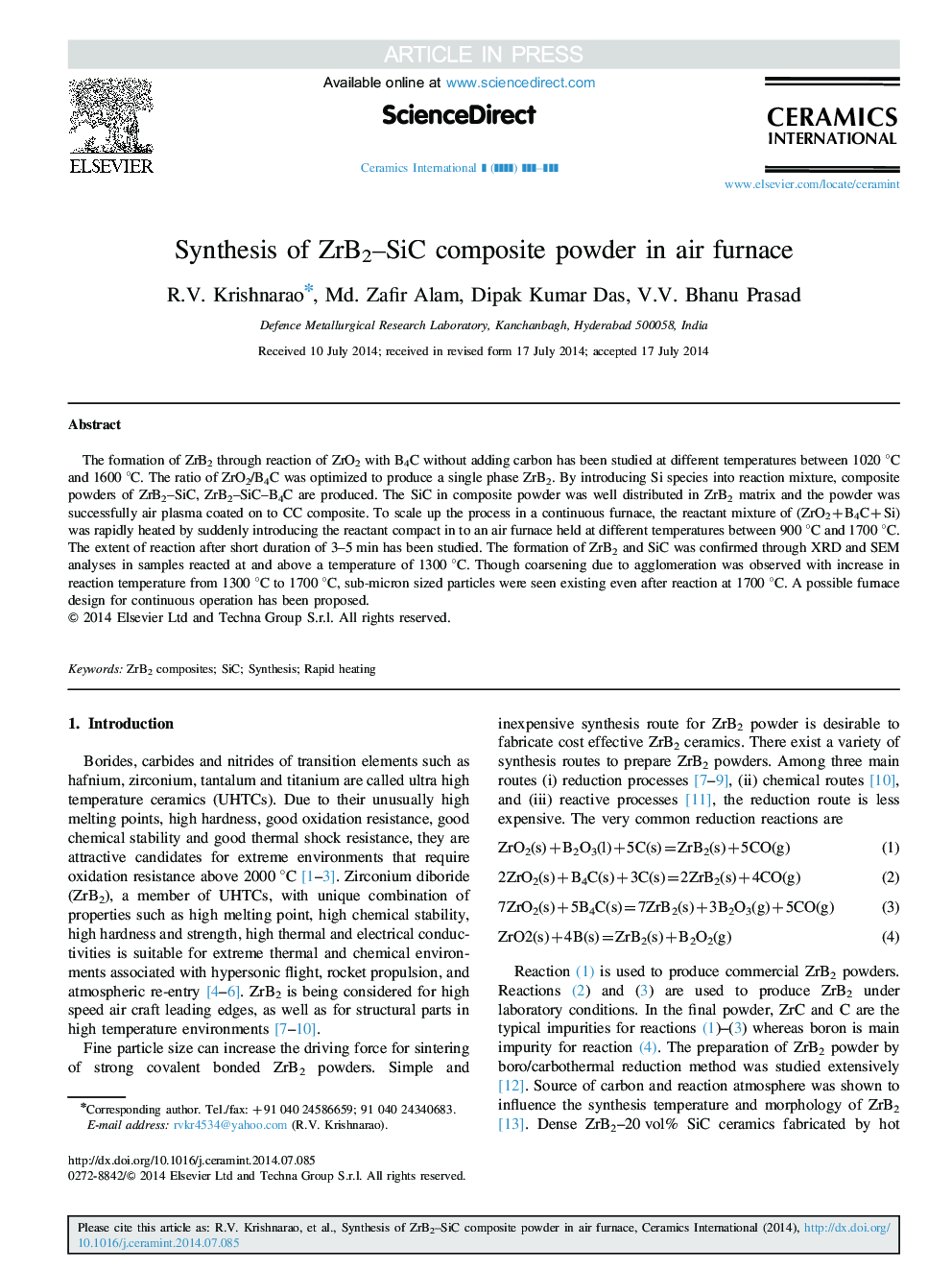| Article ID | Journal | Published Year | Pages | File Type |
|---|---|---|---|---|
| 10624863 | Ceramics International | 2014 | 7 Pages |
Abstract
The formation of ZrB2 through reaction of ZrO2 with B4C without adding carbon has been studied at different temperatures between 1020 °C and 1600 °C. The ratio of ZrO2/B4C was optimized to produce a single phase ZrB2. By introducing Si species into reaction mixture, composite powders of ZrB2-SiC, ZrB2-SiC-B4C are produced. The SiC in composite powder was well distributed in ZrB2 matrix and the powder was successfully air plasma coated on to CC composite. To scale up the process in a continuous furnace, the reactant mixture of (ZrO2+B4C+Si) was rapidly heated by suddenly introducing the reactant compact in to an air furnace held at different temperatures between 900 °C and 1700 °C. The extent of reaction after short duration of 3-5 min has been studied. The formation of ZrB2 and SiC was confirmed through XRD and SEM analyses in samples reacted at and above a temperature of 1300 °C. Though coarsening due to agglomeration was observed with increase in reaction temperature from 1300 °C to 1700 °C, sub-micron sized particles were seen existing even after reaction at 1700 °C. A possible furnace design for continuous operation has been proposed.
Keywords
Related Topics
Physical Sciences and Engineering
Materials Science
Ceramics and Composites
Authors
R.V. Krishnarao, Md. Zafir Alam, Dipak Kumar Das, V.V. Bhanu Prasad,
